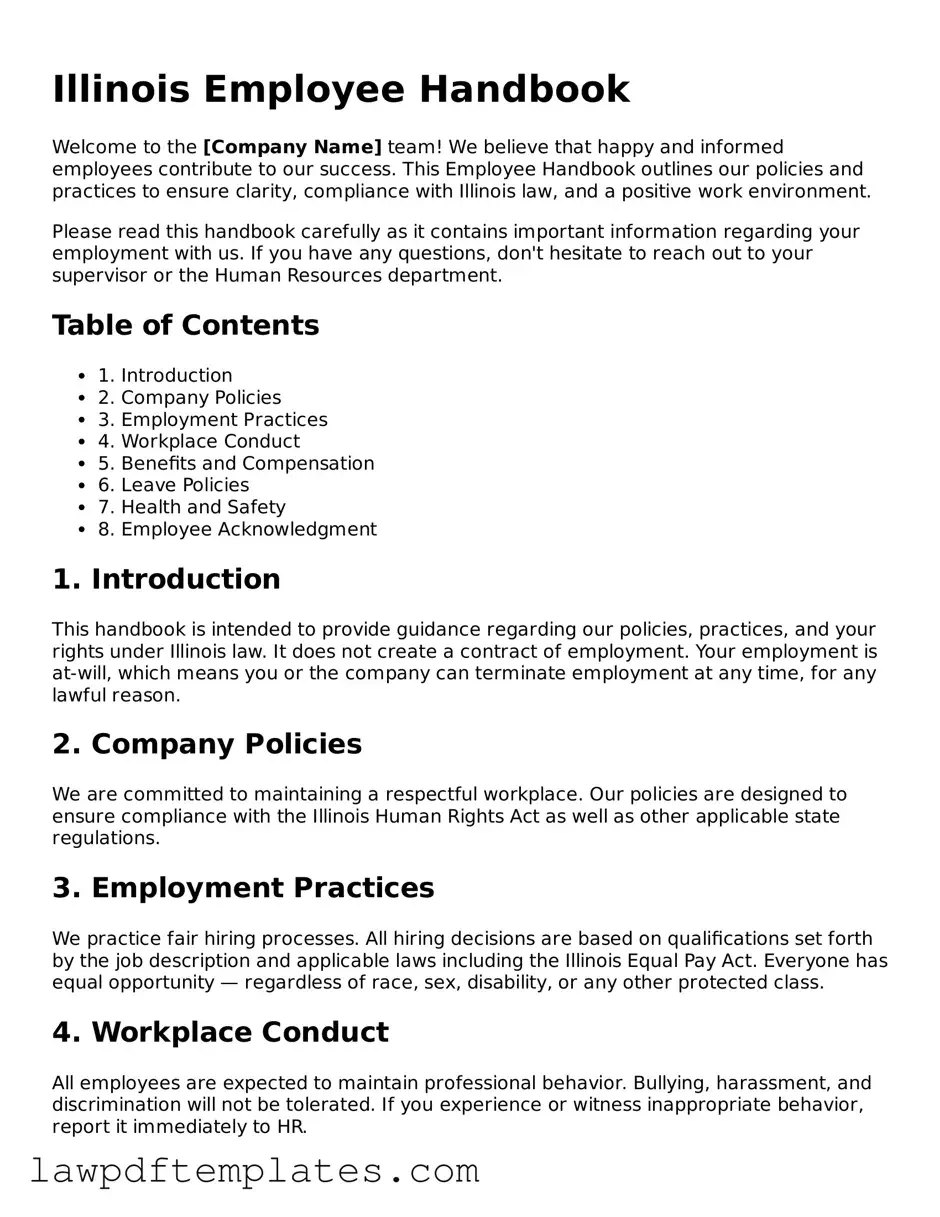Illinois Employee Handbook
Welcome to the [Company Name] team! We believe that happy and informed employees contribute to our success. This Employee Handbook outlines our policies and practices to ensure clarity, compliance with Illinois law, and a positive work environment.
Please read this handbook carefully as it contains important information regarding your employment with us. If you have any questions, don't hesitate to reach out to your supervisor or the Human Resources department.
Table of Contents
- 1. Introduction
- 2. Company Policies
- 3. Employment Practices
- 4. Workplace Conduct
- 5. Benefits and Compensation
- 6. Leave Policies
- 7. Health and Safety
- 8. Employee Acknowledgment
1. Introduction
This handbook is intended to provide guidance regarding our policies, practices, and your rights under Illinois law. It does not create a contract of employment. Your employment is at-will, which means you or the company can terminate employment at any time, for any lawful reason.
2. Company Policies
We are committed to maintaining a respectful workplace. Our policies are designed to ensure compliance with the Illinois Human Rights Act as well as other applicable state regulations.
3. Employment Practices
We practice fair hiring processes. All hiring decisions are based on qualifications set forth by the job description and applicable laws including the Illinois Equal Pay Act. Everyone has equal opportunity — regardless of race, sex, disability, or any other protected class.
4. Workplace Conduct
All employees are expected to maintain professional behavior. Bullying, harassment, and discrimination will not be tolerated. If you experience or witness inappropriate behavior, report it immediately to HR.
5. Benefits and Compensation
Your compensation structure, including pay structure and overtime policies, adheres to the Illinois Minimum Wage Law. Employee benefits, including health insurance, will be outlined during your onboarding process.
6. Leave Policies
Illinois employees are entitled to various forms of leave under state laws, including the Illinois Family Leave Act. Our policies regarding sick leave, vacation leave, and other types of leave are detailed within this section.
7. Health and Safety
Your safety is a priority. We comply with the Illinois Occupational Safety and Health Act to provide a safe working environment. Employees are encouraged to report unsafe conditions or accidents immediately.
8. Employee Acknowledgment
Upon receiving and reading this handbook, please sign and return the acknowledgment form attached at the end. Your signature indicates your understanding and acceptance of the policies outlined.
Thank you for being a valuable member of our team at [Company Name]! Together, let’s create a productive and enjoyable workplace.
